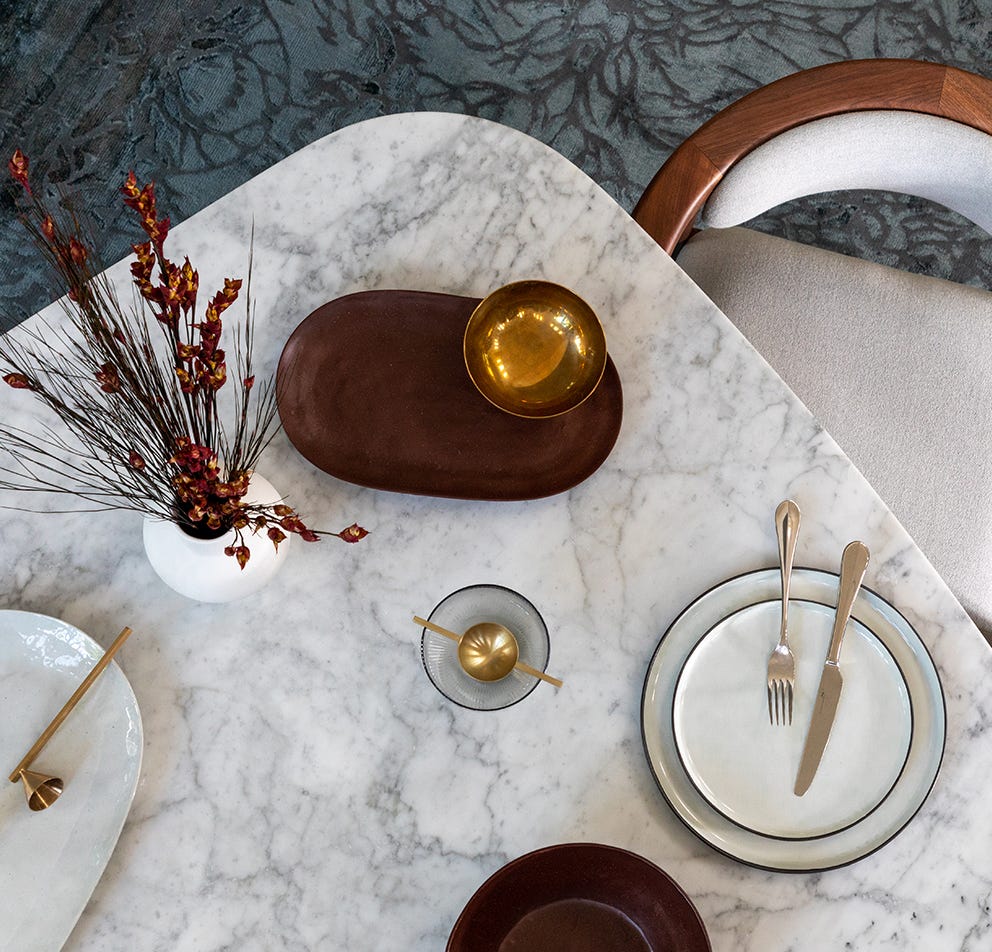Caring For Marble
Opulent and functional, decorative yet durable, marble makes the perfect practical surface for a variety of decors whether modern or classically styled.


Luxuriously carved, marble adds a touch of class to a range of spaces
Decorated in exquisite natural patterns, for centuries marble has been prized for its style and versatility. Beautifully cut from traditionally mined limestone, it is an extremely hardwearing material that provides the perfect table top or surface for the living and dining spaces.
History and Source
Recrystallized metamorphic limestone generally from the Jurassic period 204 million years ago is formed to make the beautiful marble as we know today. Mainly found in neutral shades, marble can also be found in greens and browns for a subtle lift of colour.
In most marble table tops, when viewed at a certain angle, it is possible to see some very small fissures or pinholes. These voids were created by escaping gasses during the formation of the marble and are natural geological features.
Caring for Marble
The sealing of honed marble tables is not essential but if the surface is to be used for food preparation or it is likely to suffer spills of any description then it is recommended. Liquids with a high acid content such as wines, vinegars and fruit juices can etch the surface of the marble if it is not adequately sealed. We suggest that a generous layer of ‘Antiquax’ marble wax applied at regular intervals is a uniform way of achieving a protected surface and a smooth sheen.
Marble has a fairly high heat resistance and will withstand hot plates and dishes up to around 150 degrees celcius. However, saucepans and dishes straight from the cooker may exceed this temperature and so should not be placed directly onto the table surface. Care should be taken if the table top is removed from it’s base. A marble table top is usually extremely heavy and its own weight could cause a fracture or a break if dropped onto a hard surface.
Cleaning
Normal cleaning requires only warm, soapy water or a mild household cleaner, and a soft cloth: scouring pads or other abbrasive materials should not be used.
The sealing of the marble prevents the absorption of most liquids provided they are mopped up quickly and the surface wiped down with a damp cloth. Stubborn stains and those allowed to soak in can be released with a little white spirit or a mild bleach solution. After treatment these areas should be thoroughly rinsed with fresh water and re-waxed.
